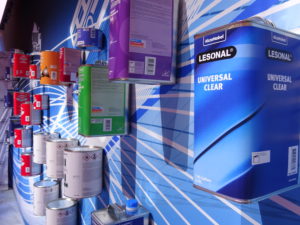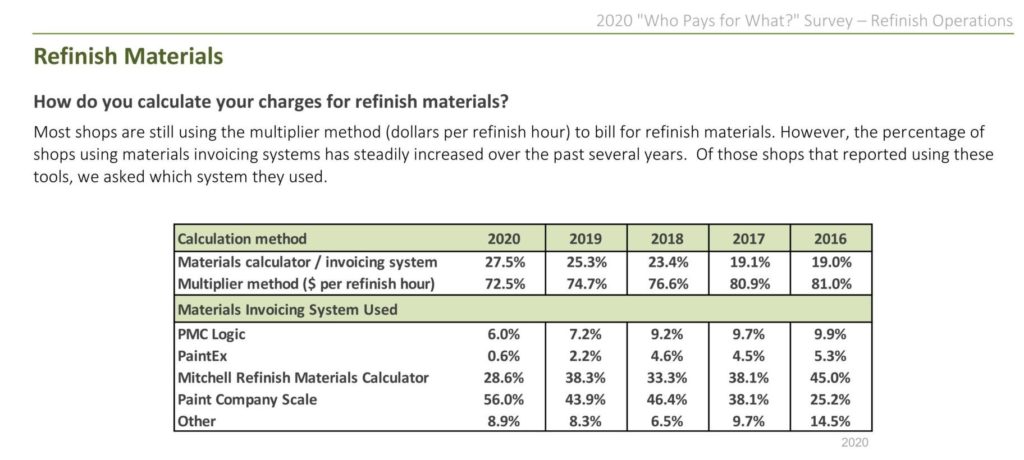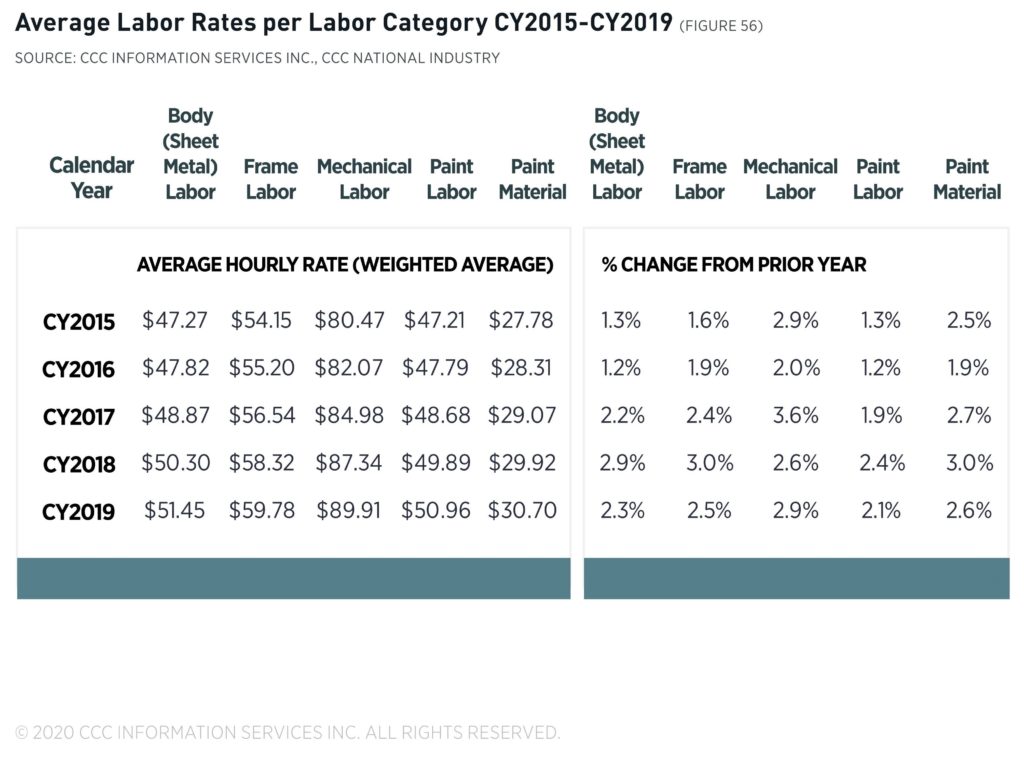
‘Who Pays?’: 28% of shops now use paint and materials invoices, calculators
By onAnnouncements | Business Practices | Insurance | Market Trends | Repair Operations | Technology
Paint and materials invoicing continues to grow in popularity among collision repairers, according to the latest “Who Pays for What?” survey results.
The survey polled 763 repairers and carried a margin of error of 3.5 percentage points with that number of respondents, which means the growth between 2019 and 2020 wasn’t a sure thing.
But it dovetailed with what the CRASH Network-Collision Advice studies show to be a trend towards invoicing and away from the “multiplier method.”
In 2016, only 19 percent of repairers responding to a “Who Pays?” question said they billed for materials with a calculator/invoice method. When the researchers asked the same question in January, 27.5 percent of shops replying said they used an invoicing system rather than multiplying refinish hours by a labor rate. The “Who Pays?” study didn’t disclose how many of the 763 respondents answered that specific question this year.
“We continue to see an increase in shops using an invoice method for materials rather than the multiplier method. I think this is going to become increasingly important as we start to see more 3-stage and 4-stage finishes, as well as more LUTs (limited-use toners) that shops may not stock because they are only infrequently used and/or have limited shelf-life,” Collision Advice CEO Mike Anderson wrote in the “Who Pays?” report, echoing a similar comment he made in 2018 regarding a 4.3-point increase from 2017 that he called a surprise.
“I believe the shift toward invoicing will continue, and that the trend toward using the paint scale to create invoices will continue as more paint companies integrate their scales and systems with the shop management systems.”
The past five years have seen paint company scales take significant share away from other invoicing/calculating systems, based on the “Who Pays?” results. In 2016, only 25.2 percent of collision repairers said they used paint company scales to compute their itemized paint and materials bills. This year, 56 percent of repairers had gone that route.
According to the January study, eight of the nation’s largest insurers accepted invoicing system charges more than half of the time. It’s interesting to see that the 2017-20 numbers for the eight carriers fluctuate all over the place between the 50-70 percent range (except for a 47.3 percent approval rate for GEICO in 2018) despite such billing growing more common.
CCC’s 2020 “Crash Course” reported an average $30.70 paint material rate in 2019, up 10.5 percent from $27.78 in 2015. (Inflation was around 8 percent between those two years.)
Help the collision industry by taking the current “Who Pays for What?” survey focusing on frame and mechanical operations before Aug. 1. All answers are kept confidential; data is published only in the aggregate.
More information:
Collision Advice and CRASH Network, June 30, 2020
Take the anonymous “Who Pays?” frame and mechanical operations survey
Images:
AkzoNobel coatings cans are seen at SEMA 2019. (John Huetter/Repairer Driven News)
In 2016, only 19 percent of repairers responding to a “Who Pays for What?” question said they billed for materials with a calculator/invoice method. When the researchers asked the same question in January 2020, 27.5 percent of shops replying said they used an invoicing system rather than multiplying refinish hours by a labor rate. (Provided by Collision Advice and CRASH Network)
According to the January 2020 “Who Pays for What?” study, eight of the nation’s largest insurers accepted invoicing system charges more than half of the time. (Provided by Collision Advice and CRASH Network)
CCC’s 2020 “Crash Course” reported an average $30.70 paint material rate in 2019, up 10.5 percent from $27.78 in 2015. (Provided by CCC)



